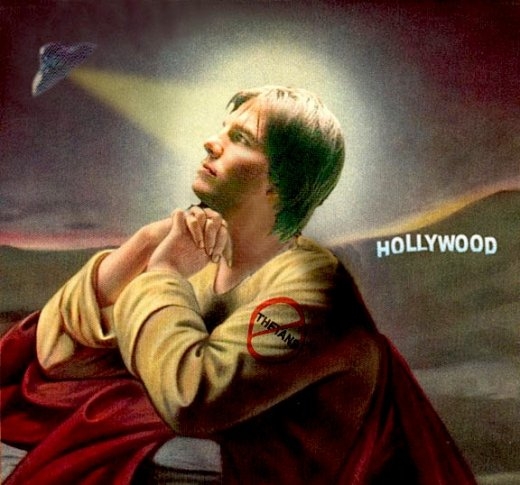
NEW YORKER: Everyone knew that the big revelations resided in level O.T. III. Hubbard called this level the Wall of Fire. He said, “The material involved in this sector is so vicious, that it is carefully arranged to kill anyone if he discovers the exact truth of it. . . . I am very sure that I was the first one that ever did live through any attempt to attain that material.” The O.T. III candidate is expected to free himself from being overwhelmed by the disembodied, emotionally wounded spirits that have been implanted inside his body. Bruce Hines, a former high-level Scientology auditor who is now a research physicist at the University of Colorado, explained to me, “Most of the upper levels are involved in exorcising these spirits.”
“The process of induction is so long and slow that you really do convince yourself of the truth of some of these things that don’t make sense,” Haggis told me. Although he refused to specify the contents of O.T. materials, on the ground that it offended Scientologists, he said, “If they’d sprung this stuff on me when I first walked in the door, I just would have laughed and left right away.” But by the time Haggis approached the O.T. III material he’d already been through several years of auditing. His wife was deeply involved in the church, as was his sister Kathy. Moreover, his first writing jobs had come through Scientology connections. He was now entrenched in the community. Success stories in the Scientology magazine Advance! added an aura of reality to the church’s claims. Haggis admits, “I was looking forward to enhanced abilities.” Moreover, he had invested a lot of money in the program. The incentive to believe was high.
In the late seventies, the O.T. material was still quite secret. There was no Google, and Scientology’s confidential scriptures had not yet circulated, let alone been produced in court or parodied on “South Park.” “You were told that this information, if released, would cause serious damage to people,” Haggis told me. Carrying an empty, locked briefcase, Haggis went to the Advanced Organization building in Los Angeles, where the material was held. A supervisor then handed him a folder, which Haggis put in the briefcase. He entered a study room, where he finally got to examine the secret document—a couple of pages, in Hubbard’s bold scrawl. After a few minutes, he returned to the supervisor.
“I don’t understand,” Haggis said.
“Do you know the words?” the supervisor asked.
“I know the words, I just don’t understand.”
“Go back and read it again,” the supervisor suggested.
Haggis did so. In a moment, he returned. “Is this a metaphor?” he asked the supervisor.
“No,” the supervisor responded. “It is what it is. Do the actions that are required.”
Maybe it’s an insanity test, Haggis thought—if you believe it, you’re automatically kicked out. “I sat with that for a while,” he says. But when he read it again he decided, “This is madness.” MORE
